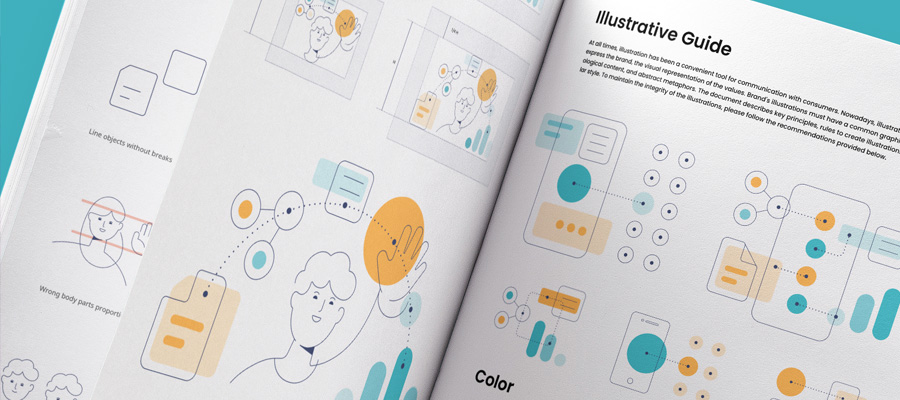Learning how to study is one of the essential skills one can get in college. You learn not only your major and other subjects but also such things as time-management, discipline, and self-organization. Understanding how studying works for you individually will help you get professional skills much faster and with less struggle.
Unfortunately, we’re not always taught the most efficient way to study at school. If you read your textbooks just like regular fiction books, no wonder you end up procrastinating and not remembering much information. Instead of being a passive reader, become an active one using one of the reading methods. This article is devoted to the reading comprehension system called SQ3R. Its name stands for the main steps of learning the information from the book: survey, question, read, recite, and review.

illustration by tubik.arts
Here are more details on the five steps of this reading method:
1. Survey (skim)
First and foremost, learn the structure of your textbook.
Check the titles and subtitles, check all of the illustrations, graphs, and tables. See if there are any bold words or a list of keywords you do not understand, and make sure to look them up.
It is a common practice to place a summary (a blurb) of each part at the beginning or in the concluding part of each chapter. Read these brief passages.
It will give you a general picture of the subject under consideration. In this way, you will find it easier to add facts when there is a clear structure in the back of your mind.
2. Question
At this stage, you form questions based on your survey. In other words, you should try to understand what question each passage of your textbook responds to and how. If the author included a set of questions at the end of the chapter, you could use those instead. If not, it will only take a minute for you to form proper questions that will later force your brain to look for useful information instead of wandering from one sentence to another one.
Let’s take an example of the article you are reading. The title is ‘How to read textbooks effectively,’ so this piece of information responds to the question ‘How do you read a textbook effectively?.’ The subtitle of this point is ‘Question,’ from that, you can see that this point responds to a question ‘What is the second step of the SQ3R technique and how it’s done?.’ By doing this exercise, you see what information you will be looking for in each part of the book.
3. Read
Choose the passage you are about to read. It should not be too long. 1 to 5 pages will be sufficient; otherwise, you might lose focus and will need to start it over. Before reading, remind yourself of the question this particular part is responding to and keep it in mind while reading. At this stage, you don’t take notes. Concentrate on understanding the information presented in the chapter, and make sure you found an answer to the question you prepared beforehand.
4. Recite
You should try taking notes of what you just have read and understood in your own words while the information is stored in your short-term memory. Just like in essay or paper writing, the newly learned information has to be outlined first. Try to be as structured as you can. Summarize the main idea of the chapter and then go into the detail. The most effective way would be to write everything down without looking into the pages you have just read. If you can’t repeat the structured information, it means you did not entirely get it. There is nothing to worry about; you just need to retake step 3. At this stage, you can clearly see all the gaps in your knowledge. You can take some time to do additional research on the information you are not sure about or ask your professor for clarifications.
5. Review
Now, it’s time to make sure the information is successfully transferred to your long-term memory. For it to happen, you will need to review your notes more than once in the designated study time that you need to determine beforehand. As you might know, regular short reviews once every other day are more efficient than struggling to remember everything in one two-hour studying session. The great reviewing technique is the repetition of the information to someone. In other words, you remember the information better by teaching it to someone else. You could cite a couple of interesting facts related to the chapter you read to your friend or repeat the summary to yourself or even your pet.
The SQ3R reading technique includes five steps, and sticking to them will save you plenty of time. What is more, the learning process becomes structured and, thus, less boring.




















Comments